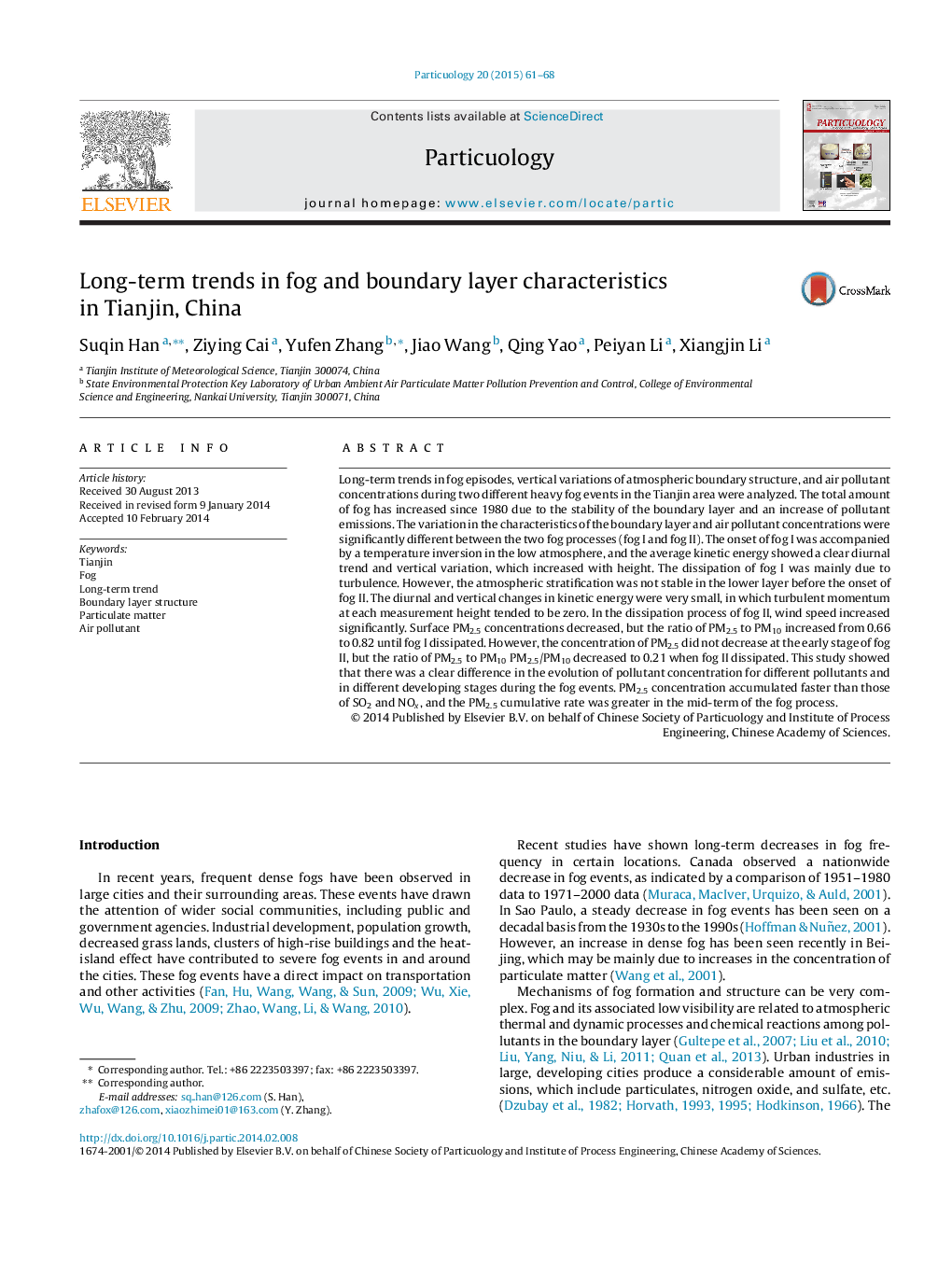| Article ID | Journal | Published Year | Pages | File Type |
|---|---|---|---|---|
| 672007 | Particuology | 2015 | 8 Pages |
•Meteorological data were examined to determine the long-term trends of fog.•Vertical structure of atmospheric boundary layer during fog events was analyzed.•Variation characteristics of air pollutant concentrations during fog events were analyzed.
Long-term trends in fog episodes, vertical variations of atmospheric boundary structure, and air pollutant concentrations during two different heavy fog events in the Tianjin area were analyzed. The total amount of fog has increased since 1980 due to the stability of the boundary layer and an increase of pollutant emissions. The variation in the characteristics of the boundary layer and air pollutant concentrations were significantly different between the two fog processes (fog I and fog II). The onset of fog I was accompanied by a temperature inversion in the low atmosphere, and the average kinetic energy showed a clear diurnal trend and vertical variation, which increased with height. The dissipation of fog I was mainly due to turbulence. However, the atmospheric stratification was not stable in the lower layer before the onset of fog II. The diurnal and vertical changes in kinetic energy were very small, in which turbulent momentum at each measurement height tended to be zero. In the dissipation process of fog II, wind speed increased significantly. Surface PM2.5 concentrations decreased, but the ratio of PM2.5 to PM10 increased from 0.66 to 0.82 until fog I dissipated. However, the concentration of PM2.5 did not decrease at the early stage of fog II, but the ratio of PM2.5 to PM10 PM2.5/PM10 decreased to 0.21 when fog II dissipated. This study showed that there was a clear difference in the evolution of pollutant concentration for different pollutants and in different developing stages during the fog events. PM2.5 concentration accumulated faster than those of SO2 and NOx, and the PM2.5 cumulative rate was greater in the mid-term of the fog process.
Graphical abstractFigure optionsDownload full-size imageDownload as PowerPoint slide
